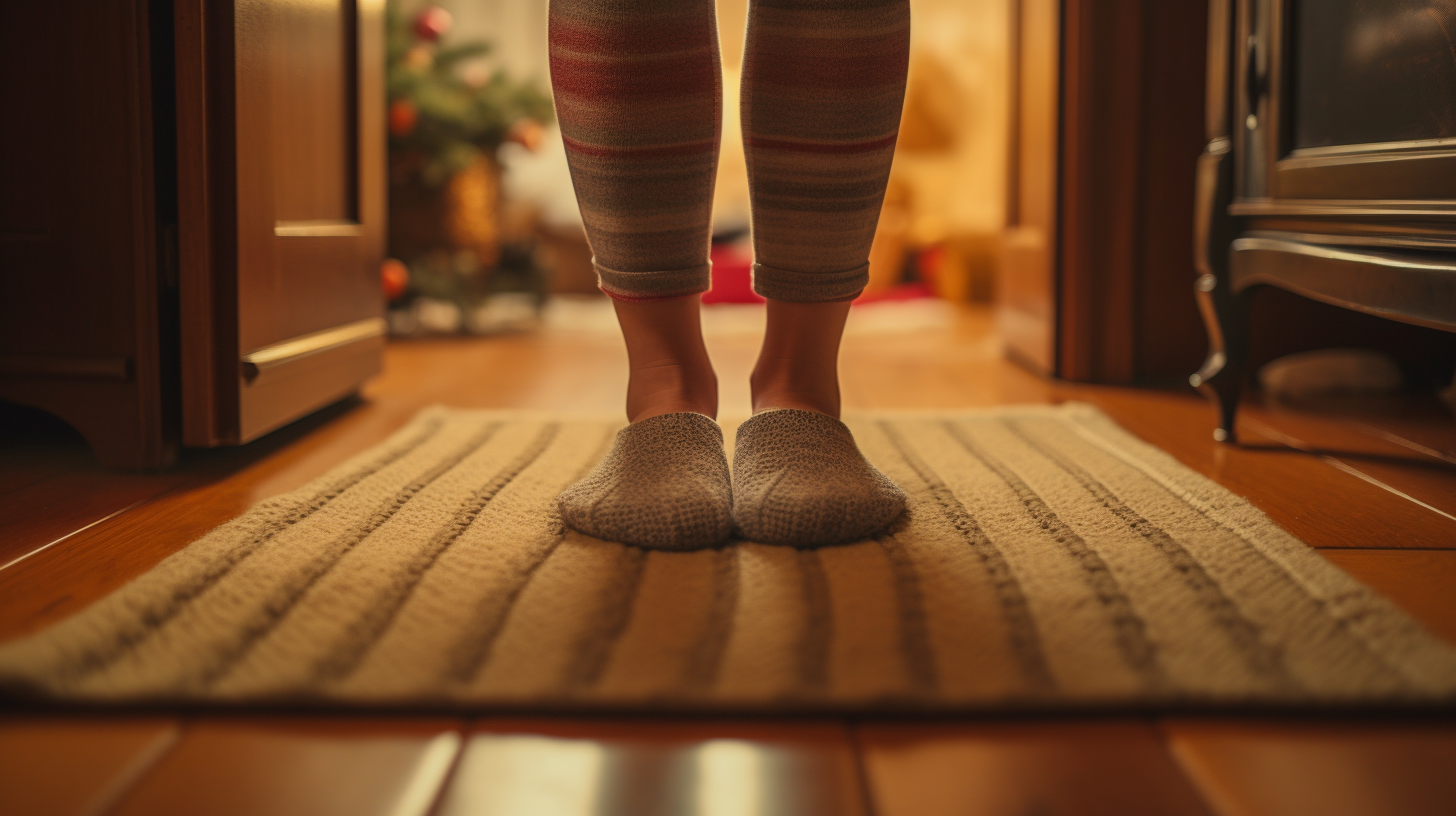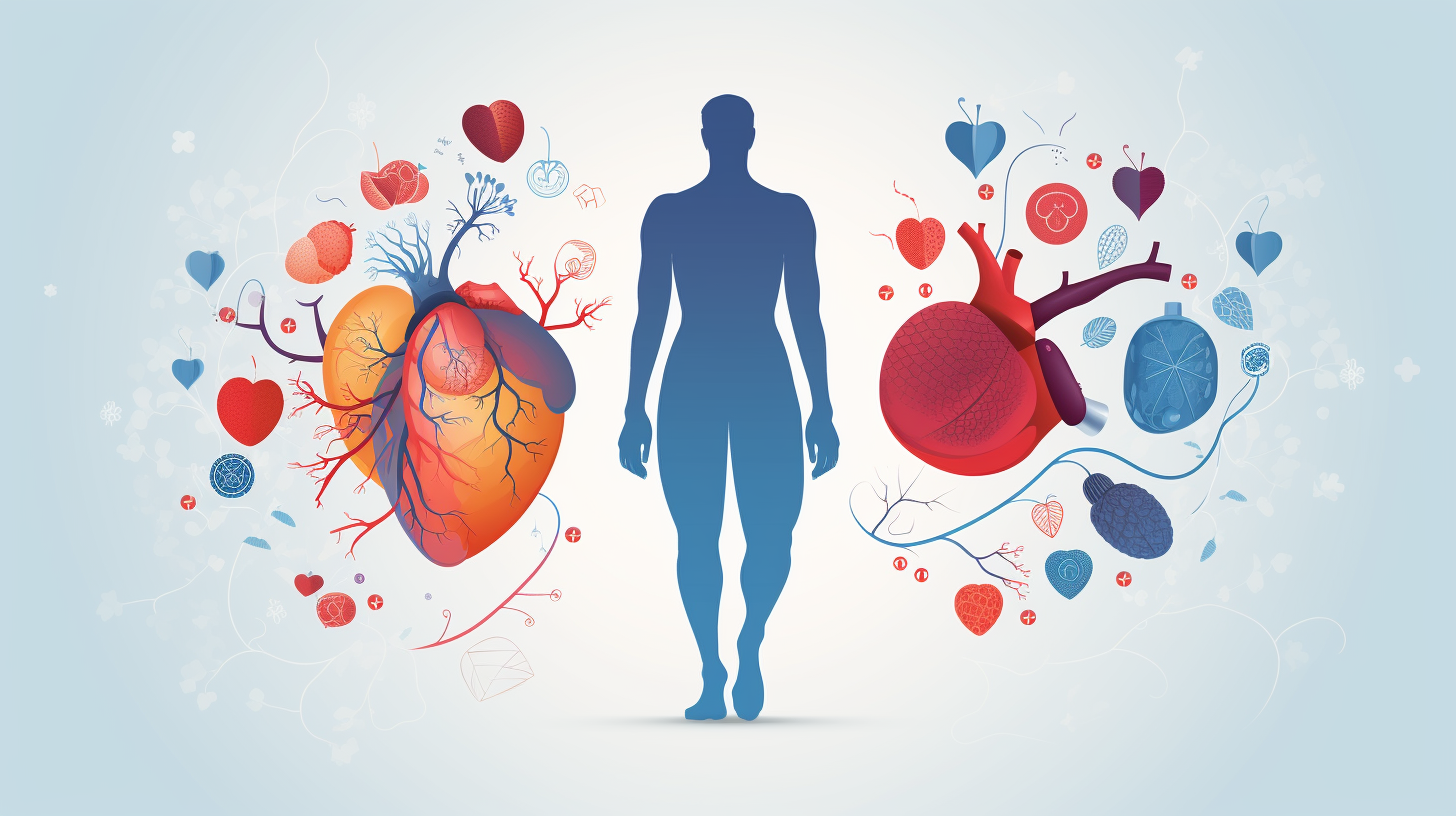Do your feet often feel like blocks of ice, no matter what the temperature is? You're not alone; many people around the world experience cold feet. Cold feet can be quite common and can stem from a variety of factors. Understanding the causes, diagnosis, and treatments for this chilly issue is crucial in finding relief.
Poor circulation, high blood pressure, underlying medical conditions, and certain lifestyle choices can all contribute to cold feet and cold hands. Conditions like peripheral arterial disease, diabetes, hypothyroidism, and iron deficiency can play a role as well. If you're experiencing cold feet along with other concerning symptoms such as sores, fatigue, weight changes, cold hands, or foot pain, it's important to seek medical attention.
There are various treatment options, including lifestyle changes like exercise and quitting smoking, wearing warm socks and shoes, using foot warmers, and soaking your feet in lukewarm water. These options can help treat cold feet temporarily. Addressing the underlying cause, such as managing diabetes or thyroid issues, can also help improve symptoms.
By understanding and addressing the causes of cold feet (and often cold hands), you can take steps towards finding relief and warmth for your feet. If your feet feel cold, we recommend you to keep reading this article.
Underlying Health Conditions and Blood Flow

If you have cold feet, it's important to consider that underlying health conditions, such as diabetes, anemia, hypothyroidism, Raynaud's disease, Buergers disease, and high cholesterol, could be contributing to your symptoms.
Cold feet can be caused by circulatory disorders (like poor blood flow), nerve damage, thyroid dysfunction, anemia and iron deficiency, smoking and circulation, and complications of diabetes. You may also have chronically cold feet.
Diabetes can lead to peripheral neuropathy and peripheral artery disease, both of which can cause cold feet. Hypothyroidism can affect metabolism and circulation, resulting in cold feet. Anemia, a condition characterized by low red blood cells, can also manifest as cold feet. Buergers disease, often associated with tobacco use, can cause decreased blood flow and cold feet. High cholesterol can lead to circulation problems and cold feet.
Treatment options for cold feet include addressing the underlying health condition and improving circulation through lifestyle changes, medications, and other interventions. This will help address both cold hands and feet.
Signs and Symptoms

Pay attention to the signs and symptoms your body's giving you, as they can provide valuable insight into the underlying issues causing your discomfort. This not only include only feeling cold, but also joint pains. It's important to take a step back and evaluate the rest of your body.
When it comes to cold feet, there are several causes to consider. Medical conditions such as peripheral artery disease, diabetes, and Raynaud's disease can all contribute to cold feet. Symptoms of poor circulation may include numbness, tingling, and discoloration of the skin. Hypothyroidism can also impact circulation and lead to cold feet. Smoking can further worsen circulation, making the problem even more pronounced. It can also just be exposure to cold temperatures.
Fortunately, there are treatments available to help alleviate cold feet. Making dietary changes, such as consuming foods rich in antioxidants and vitamins, can improve circulation. Regular exercise is also beneficial for increasing blood flow to the extremities. By addressing these factors, you can work towards warmer and more comfortable feet.
Risk Factors

If you're a smoker, it's important to know that smoking can have a significant impact on your circulation. It can lead to cold feet because smoking narrows blood vessels and reduces blood flow. This can result in poor circulation and cold extremities. Additionally, if you have diabetes, it can also affect circulation and contribute to cold feet.
Smoking and poor circulation
To warm up your frequent cold feet caused by poor circulation, you should consider quitting smoking, as it can significantly improve blood flow and help alleviate the chill.
Smoking cessation is crucial for your cardiovascular health, as nicotine addiction can lead to artery blockage and reduced blood flow throughout your body. By quitting smoking, you can enhance your vascular health and promote better circulation to your feet.
Not only will this benefit your feet, but it will also improve your lung health and overall well-being. There are various quitting methods available, such as nicotine replacement therapy, medications, and counseling.
Speak to your healthcare provider for guidance and support on your journey to quitting smoking and improving blood flow to your cold feet. Quitting smoking can also alleviate not only the cold sensation but also other symptoms
Impact of diabetes
Improve your overall health and well-being by managing your diabetes effectively, as it can have a significant impact on the temperature and blood flow to your feet. Diabetes management is crucial for preventing complications such as neuropathy, which can lead to cold feet.
One important aspect of diabetes management is blood sugar control. By consistently monitoring your blood glucose levels and making necessary adjustments, you can help maintain proper circulation to your feet. Additionally, practicing good diabetic foot care is essential. This includes regularly checking your feet for any signs of injury or infection, keeping them clean and moisturized, and wearing comfortable, well-fitting shoes.
Lifestyle modifications, such as maintaining a healthy weight, engaging in regular physical activity, and following a balanced diet, can also contribute to better overall diabetes management. In some cases, insulin therapy may be necessary to help control blood sugar levels.
By taking these steps and working closely with your healthcare team, you can minimize the risk of nerve damage and maintain optimal foot health.
Potential Treatment Options
Are you wondering if dietary changes can help improve circulation and alleviate cold feet? Well, incorporating foods that promote healthy blood flow, such as garlic, ginger, and cayenne pepper, into your diet may have a positive impact on your circulation.
Additionally, regular exercise can also help improve circulation and keep your feet warm by increasing blood flow throughout your body. Dietary changes for circulation?
Managing your diet to include foods rich in vitamins and minerals such as iron, vitamin B12, and antioxidants can potentially enhance circulation and help alleviate cold feet. Incorporating foods for circulation, such as leafy greens, nuts and seeds, fatty fish, and citrus fruits, can provide essential nutrients that support healthy blood flow.
Additionally, taking supplements for circulation, like omega-3 fatty acids and CoQ10, may also be beneficial. Making lifestyle changes, such as reducing caffeine intake and increasing hydration, can improve blood circulation. Regular exercise, such as walking or swimming, can also promote healthy blood flow to the extremities.
It is important to manage stress levels, as stress can constrict blood vessels and decrease circulation. By making these dietary and lifestyle adjustments, you can potentially improve circulation and reduce the occurrence of cold feet.
Exercise and cold feet?
If you're looking to improve blood flow and combat cold feet, regular exercise is key. Exercise has numerous benefits for circulation, helping to increase blood flow throughout your body, including your feet. Here are some important points to consider:
Effects on blood flow: Engaging in physical activity improves blood circulation, delivering oxygen and nutrients to your extremities more efficiently.
Benefits of regular exercise: Exercise not only improves circulation but also strengthens your cardiovascular system, reduces the risk of heart disease, and promotes overall health and well-being.
Best exercises for improving circulation: Activities that get your heart pumping, such as walking, jogging, cycling, swimming, and aerobic exercises, are particularly effective at improving blood flow.
Relationship between exercise and cold feet: Regular exercise can help alleviate cold feet by promoting better blood circulation to your extremities, keeping them warm and reducing the risk of conditions like peripheral artery disease, peripheral neuropathy, and hypothyroidism.
So, lace up your sneakers and get moving to promote better blood flow and say goodbye to cold feet.
Preventive Measures
To prevent cold feet, you can take proactive steps like wearing warm socks, engaging in regular exercise, and avoiding cigarettes to improve circulation. Here are some lifestyle modifications and natural remedies that can help improve blood circulation and keep your feet warm:
| Lifestyle Modifications | Natural Remedies |
|---|---|
| Engage in regular exercise to improve blood flow | Massage therapy to promote circulation |
| Avoid sitting or standing for long periods of time | Use foot warmers or heated socks |
| Choose footwear that provides insulation and support | Soak your feet in warm water with Epsom salt |
| Take cold weather precautions by wearing insulated boots and layering socks | Elevate your feet to reduce swelling and improve circulation |
| Maintain a healthy weight and avoid restrictive clothing or shoes | Use essential oils like ginger or cypress for warming effects |
By incorporating these tips into your daily routine, you can help prevent cold feet and improve your overall foot health.
Frequently Asked Questions
Can cold feet be a sign of a serious underlying health condition?
Yes, cold feet can be a sign of serious underlying health conditions. Circulation problems, nerve damage, autoimmune diseases, hormonal imbalances, peripheral artery disease, Raynaud's disease, diabetes complications, and anemia can all contribute to cold feet.
Are there any specific signs or symptoms that should accompany cold feet?
Some signs or symptoms that should accompany cold feet include tingling, numbness, pain, pale or blue skin, and other foot or leg-related symptoms. These can indicate circulation issues, nerve damage, or peripheral artery disease. Cold weather can also worsen the effects. Prevention and remedies include wearing warm socks, staying active, and soaking feet in warm water.
What are some lesser-known risk factors for cold feet?
Some lesser-known risk factors for cold feet include circulation problems, nerve damage, autoimmune disorders, vitamin deficiencies, medication side effects, hormonal imbalances, mental health factors, and environmental factors. These can all contribute to poor circulation and cold feet.
What are some potential treatment options for chronic cold feet?
To treat chronic cold feet, you can try natural remedies like wearing warm socks or using heat therapy techniques. Physical therapy may help improve circulation, while medication options and lifestyle changes can also be effective. Alternative therapies like acupuncture and surgical interventions may be considered.
Are there any preventive measures that can help reduce the occurrence of cold feet?
To reduce the occurrence of cold feet, try making lifestyle modifications like quitting smoking and managing cholesterol levels. Incorporate dietary changes, exercise routines, and stress management techniques. Choose appropriate footwear, do warm-up exercises, and focus on improving circulation while avoiding triggers.
Conclusion
So, if you've been experiencing cold feet, it's important to understand the underlying causes and seek medical advice for proper diagnosis and treatment.
Lifestyle changes like exercise and quitting smoking, as well as wearing warm socks and shoes, can help alleviate symptoms.
Addressing underlying health conditions such as diabetes or thyroid issues is also crucial.
Remember to take preventive measures and prioritize your foot health. Don't hesitate to consult with a healthcare professional for personalized guidance and support.
Stay warm and take care of your feet!
